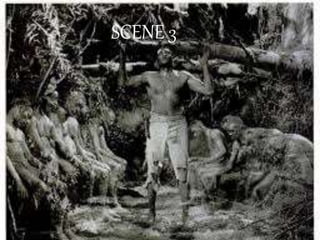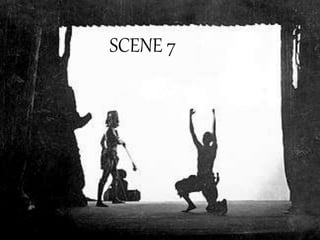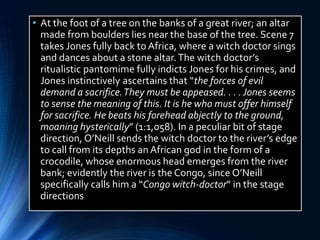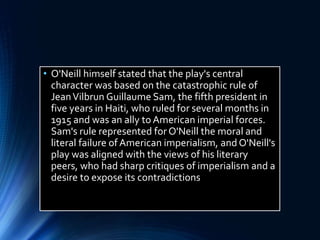This document provides a detailed summary of the play The Emperor Jones by Eugene O'Neill. It describes the plot, characters, themes, and context of the play. Specifically, it discusses that the play tells the story of Brutus Jones, a former train porter who becomes the emperor of a Caribbean island but must escape into the jungle during a revolution. As he navigates the forest, he experiences haunting hallucinations from his traumatic past. The themes explored include the impact of past trauma, the legacy of slavery, racism, the fall of a corrupt ruler, and Jones as a tragic hero.










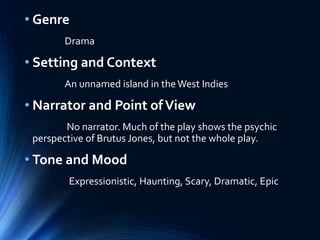
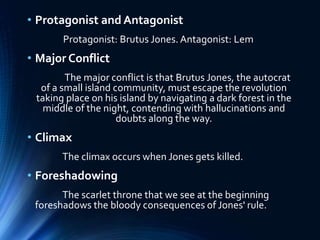
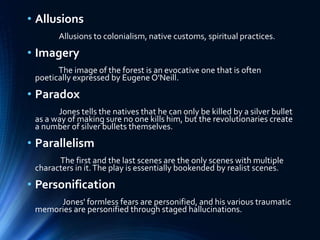
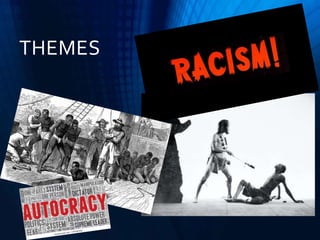
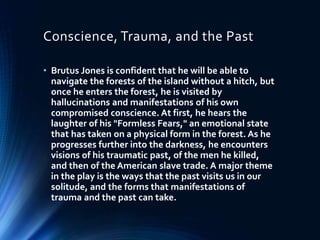



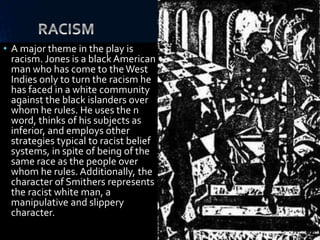






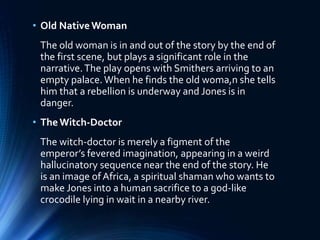


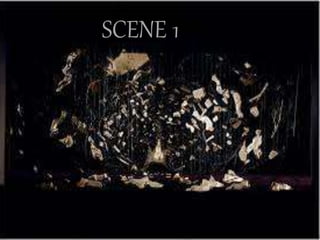

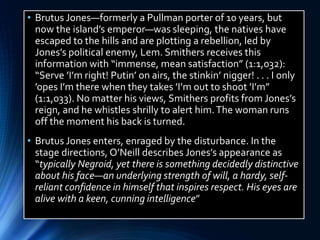



![• The edge of the “Great Forest.” Now on the run, Jones is
exhausted from the journey but relaxed and self-
congratulatory. However, his sinecure as emperor has ill-
trained him for the grueling trek through the jungle. Jones
foreshadows what lies ahead by bolstering his resolve with the
words, “Cheer up, nigger, de worst is yet to come” (1:1,044;
remarkably, these are the same words [excluding the racial
epithet] MarkTwain once wrote to his wife in response to her
fears of impending bankruptcy, though apparently O’Neill got
the line from his friendTerry Carlin). Jones comes to realize his
surroundings are unfamiliar and fails to locate the store of
food he purposefully hid under a white stone, as the one stone
has inexplicably proliferated into many.](https://image.slidesharecdn.com/presentation1-210630053039/85/The-Emperor-Jones-Analysis-35-320.jpg)

